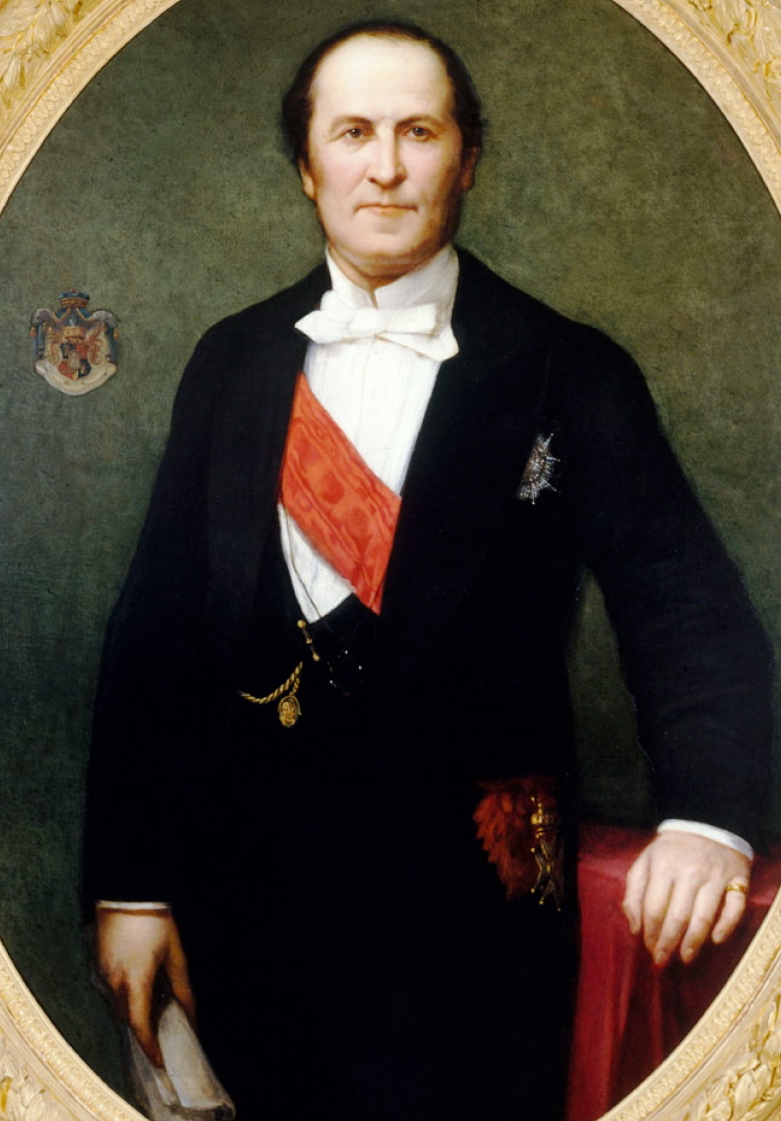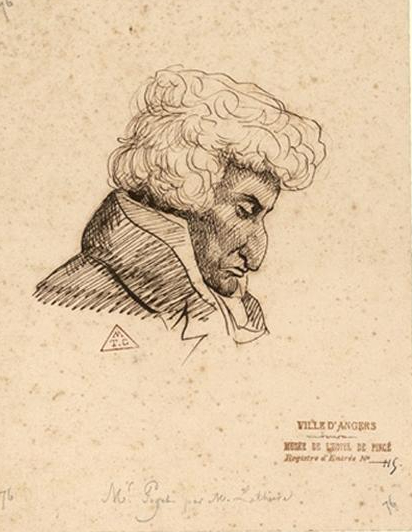|
Sainte-Anne Hospital Center
The Sainte-Anne Hospital Center (French: ''Centre hospitalier Sainte-Anne'') is a hospital located in the 14th arrondissement of Paris, specializing in psychiatry, neurology, neurosurgery, neuroimaging and addiction. With its creation dating to 1651, the organization remains, along with the Esquirol Hospital in Saint-Maurice, the symbol of psychiatric asylums in France. History Creation of the Sainte-Anne Hospital Center The letters patent of the king confirming the transfer of the services from the hospital of the health of the to the Sainte-Anne hospital date to May 1651. By the contract of 7 July 1651, between the governors of the Hôtel-Dieu and the founders of power of the Queen Regent Anne of Austria, the Hôtel-Dieu gave up the buildings and the grounds of the House of Health, the queen giving in exchange the 21 arpents (about 26.5 acres) of land chosen to establish the new hospital, which was to take the name of the patron saint of the mother of Louis XIV, Sai ... [...More Info...] [...Related Items...] OR: [Wikipedia] [Google] [Baidu] |
14th Arrondissement Of Paris
The 14th arrondissement of Paris ( ), officially named ''arrondissement de l'Observatoire'' (; meaning "arrondissement of the Observatory", after the Paris Observatory), is one of the 20 arrondissements of the capital city of France. It is situated on the left bank of the River Seine and contains most of the Montparnasse district. Although today Montparnasse is best known for its skyscraper, the Tour Montparnasse, and its major railway terminus, the Gare Montparnasse, these are both actually located in the neighboring 15th arrondissement. The district has traditionally been home to many artists as well as a Breton community, arrived at the beginning of the 20th century upon the creation of the Montparnasse railway terminus. Universities located in the 14th arrondissement also include the Cité Internationale Universitaire de Paris, which is located near the Parc Montsouris, the Stade Charléty and the catacombs; and the Paris School of Economics. Geography The land area of t ... [...More Info...] [...Related Items...] OR: [Wikipedia] [Google] [Baidu] |
Louis XIV Of France
, house = Bourbon , father = Louis XIII , mother = Anne of Austria , birth_date = , birth_place = Château de Saint-Germain-en-Laye, Saint-Germain-en-Laye, France , death_date = , death_place = Palace of Versailles, Versailles, France , burial_date = 9 September 1715 , burial_place = Basilica of Saint-Denis , religion = Catholicism (Gallican Rite) , signature = Louis XIV Signature.svg Louis XIV (Louis Dieudonné; 5 September 16381 September 1715), also known as Louis the Great () or the Sun King (), was King of France from 14 May 1643 until his death in 1715. His reign of 72 years and 110 days is the longest of any sovereign in history whose date is verifiable. Although Louis XIV's France was emblematic of the age of absolutism in Europe, the King surrounded himself with a variety of significant political, military, and cultural figures, such as Bossuet, Colbert, Le Brun, Le Nôtre, Lully, Mazarin, Molière, Racine, Turenne, a ... [...More Info...] [...Related Items...] OR: [Wikipedia] [Google] [Baidu] |
Pierre Deniker
Pierre Deniker (16 February 1917, in Paris – 17 August 1998) was involved, jointly with Jean Delay and J. M. Harl, in the introduction of chlorpromazine (Thorazine), the first antipsychotic used in the treatment of schizophrenia, in the 1950s.Kandel, E. R. (2007). ''In Search of Memory. The Emergence of a New Science of Mind.'' W. W. Norton & Co. See alsA review in Spanish about Kandel's book/ref> Thorazine had been used in surgical procedures peri-operatively as an anti-nausea medication in France. Patients were noted to be less anxious and calmer. This observation eventually led Deniker to try chlorpromazine with patients who had schizophrenia, where he observed notable improvement in symptoms. The pharmaceutical company Smith-Kline had purchased the chlorpromazine rights from Rhone-Poulenc in France and had been marketing it as an anti-nausea medication. After Deniker's observations, they sought and received FDA The United States Food and Drug Administration (FDA or ... [...More Info...] [...Related Items...] OR: [Wikipedia] [Google] [Baidu] |
Jean Delay
Jean Delay (14 November 1907, Bayonne – 29 May 1987, Paris) was a French psychiatrist, neurologist, writer, and a member of the Académie française (Chair 17). His assistant Pierre Deniker conducted a test of chlorpromazine on the male mental ward where Delay worked, and the two published their findings (quickly, with what has been called academic gamesmanship) in 1952. Chlorpromazine turned out to be the first effective drug treatment for mental illness and it had a profound effect on the mentally ill and mental asylums. In 1968–1970, student revolutionaries attacked his offices, and Delay was forced into retirement from medicine. In later life, he lived as a writer. Family and education The son of Maurice Delay, a successful surgeon and mayor of Bayonne, at age fourteen Delay earned a baccalaureate in philosophy. He studied medicine in Paris. After studying in hospitals for twenty years, especially the teaching of Pierre Janet and Georges Dumas, he turned to psychiatry. ... [...More Info...] [...Related Items...] OR: [Wikipedia] [Google] [Baidu] |
P1110093 Paris XIII Rue Cabanis Entrée Hôpital Sainte-Anne Rwk
P111 may refer to: Vessels * , a patrol boat of the Colombian Navy * , a patrol boat of the Mexican Navy * , a patrol boat of the Turkish Navy Other uses * Boulton Paul P.111, a British experimental aircraft * Papyrus 111, a biblical manuscript * Pentium III, a central processing unit * Piaggio P.111 The Piaggio P.111 was an Italian high-altitude research aircraft designed and built by Piaggio for the '' Regia Aeronautica'' (Italian Royal Air Force). Design and development The genesis of the P.111 was in 1938, when the ''Regia Aeronautica'' ..., an Italian high-altitude research aircraft * P111, a state regional road in Latvia {{Letter-NumberCombDisambig ... [...More Info...] [...Related Items...] OR: [Wikipedia] [Google] [Baidu] |
Édouard Toulouse
Édouard Toulouse (1865–1947) was a French psychiatrist, journalist, and director of the literary magazine ''Demain''. He was born in Marseille on 10 December 1865 and died in Paris 19 January 1947. Career As a young man, Toulouse worked for a number of newspapers in Marseille as a drama critic. He later headed the Clinic for Mental Illness at the Paris Faculty.:14 Toulouse believed artistic creativity had an important role to play in psychological treatment. He considered himself a novelist, 'and said that he had come to science through literary activity':14 In 1896 he conducted a survey of men of exceptional genius where he profiled writer Émile Zola and French luminaries to identify shared, explainable characteristics. Following this project, Toulouse was named the director of a modern clinic in the Parisian suburb of Villejuif in 1898. In 1912 he established the fortnightly literary journal ''Demain'', which covered a wide array of topics. A number of important figures w ... [...More Info...] [...Related Items...] OR: [Wikipedia] [Google] [Baidu] |
Chapelle Du Centre Hospitalier Sainte-Anne Construite (1869) Par L'architecte Charles Auguste Questel
Chapelle or La Chapelle may refer to: Communes in France * La Chapelle, Allier * La Chapelle, Ardennes * La Chapelle, Charente * La Chapelle, Savoie * Les Chapelles, Savoie department Other places * Église de la Chapelle or Kapellekerk, a church in Brussels * Quartier de La Chapelle, a neighborhood of Paris, France * La Chapelle (Paris Metro), a metro station in Paris, France * Porte de la Chapelle (Paris Metro), a metro station in Paris, France * Sainte-Chapelle, a Gothic chapel on the Île de la Cité, Paris, France * La Chapelle, Artibonite, a commune in Artibonite department, Haiti * La Chapelle, a commune of Plan-les-Ouates, Switzerland * Chapelle, Glâne, a municipality of the canton of Fribourg, Switzerland * Archbishop Chapelle High School, a high school in New Orleans, United States * Aix-la-Chapelle or Aachen, Germany Other uses * La Chapelle (Church), a Baptist Evangelical multi-site church based in Montreal, Canada. *Chapelle (surname) *Chapelle Jewellery, a br ... [...More Info...] [...Related Items...] OR: [Wikipedia] [Google] [Baidu] |
Yonne
Yonne () is a department in the Bourgogne-Franche-Comté region in France. It is named after the river Yonne, which flows through it, in the country's north-central part. One of Bourgogne-Franche-Comté's eight constituent departments, it is located in its northwestern part, bordering Île-de-France. It was created in 1790 during the French Revolution. Its prefecture is Auxerre, with subprefectures in Avallon and Sens. Its INSEE and postcode number is 89. Yonne is Bourgogne-Franche-Comté's fourth-most populous department, with a population of 335,707 (2019).Populations légales 2019: 89 Yonne INSEE Its largest city is its prefecture Auxerre, with a population of about 35,000 within city limits and 68,000 in the urban area. History The first evidence of occupation in this ...[...More Info...] [...Related Items...] OR: [Wikipedia] [Google] [Baidu] |
Seine (department)
Seine was the former department of France encompassing Paris and its immediate suburbs. It is the only enclaved department of France at that time. Its prefecture was Paris and its INSEE number was 75. The Seine department was disbanded in 1968 and its territory divided among four new departments: Paris, Hauts-de-Seine, Seine-Saint-Denis and Val-de-Marne. '' La Dépêche'', 10 July 2014. General characteristics From 1929 to its abolition in 1968, the department consisted of the City of Paris and 80 surrounding suburban |
Georges-Eugène Haussmann
Georges-Eugène Haussmann, commonly known as Baron Haussmann (; 27 March 180911 January 1891), was a French official who served as Prefect (France), prefect of Seine (department), Seine (1853–1870), chosen by Emperor Napoleon III to carry out a massive urban renewal programme of new boulevards, parks and public works in Paris commonly referred to as Haussmann's renovation of Paris.http://www.culture.gouv.fr/documentation/joconde/fr/decouvrir/zoom/zoom-haussmann.htm - Joconde - visites guidées - zooms - baron Haussmann 2012-03-05 Critics f ... [...More Info...] [...Related Items...] OR: [Wikipedia] [Google] [Baidu] |
Napoleon III
Napoleon III (Charles Louis Napoléon Bonaparte; 20 April 18089 January 1873) was the first President of France (as Louis-Napoléon Bonaparte) from 1848 to 1852 and the last monarch of France as Emperor of the French from 1852 to 1870. A nephew of Napoleon I, he was the last monarch to rule over France. Elected to the presidency of the Second Republic in 1848, he seized power by force in 1851, when he could not constitutionally be reelected; he later proclaimed himself Emperor of the French. He founded the Second Empire, reigning until the defeat of the French Army and his capture by Prussia and its allies at the Battle of Sedan in 1870. Napoleon III was a popular monarch who oversaw the modernization of the French economy and filled Paris with new boulevards and parks. He expanded the French overseas empire, made the French merchant navy the second largest in the world, and engaged in the Second Italian War of Independence as well as the disastrous Franco-Prussian War, dur ... [...More Info...] [...Related Items...] OR: [Wikipedia] [Google] [Baidu] |
Bernard Poyet
Bernard Poyet (3 May 1742, Dijon - 6 December 1824, Paris was a French architect; best known for his work on the Palais Bourbon. Biography He was a student of Charles De Wailly who, in 1766, charged him with supervising the construction of a barn stable at the Château des Ormes. Although a utilitarian structure, it included the installation of a sculpted pediment, depicting the goddess Cybele, by the King's sculptor, Augustin Pajou. In 1768, he took second place at the Prix de Rome with a project for a comic theatre. The following year, he obtained a stipend for a stay as a boarder at the Académie de France à Rome. Upon his departure, his proposals for a new main building at the Château were taken up by another student of De Wailly's, who worked on the project until 1783. Upon his return, he was named official architect to Louis Philippe I, Duke of Orléans and oversaw some small construction projects in the suburbs. In 1786, he was admitted to the Académie Royale d'Arc ... [...More Info...] [...Related Items...] OR: [Wikipedia] [Google] [Baidu] |







